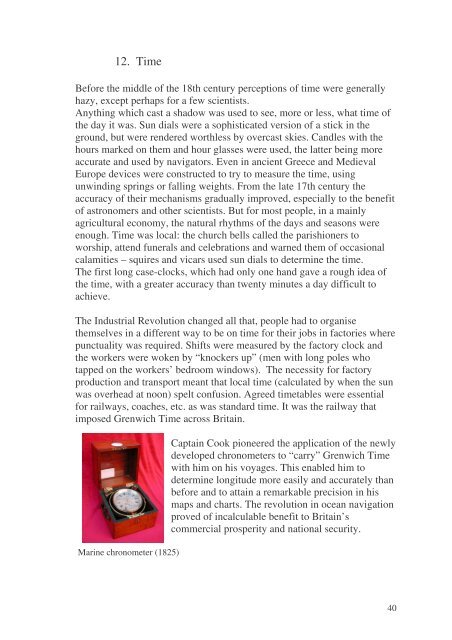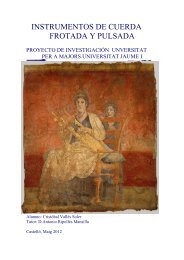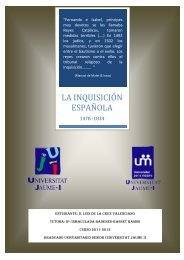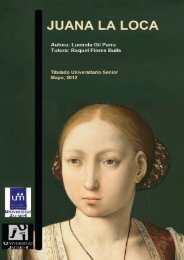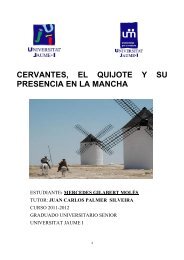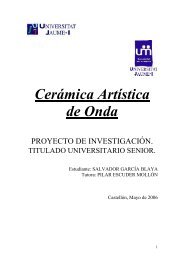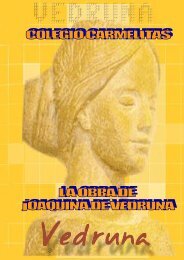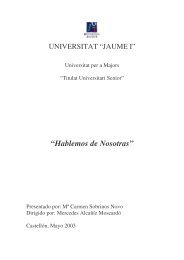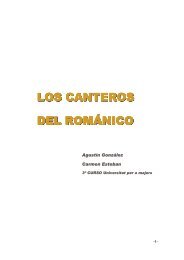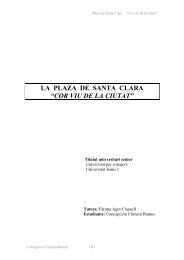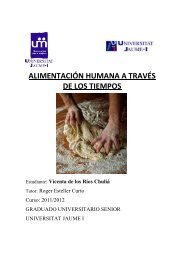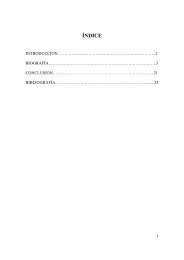The industrial Revolution - Universitat per a Majors
The industrial Revolution - Universitat per a Majors
The industrial Revolution - Universitat per a Majors
You also want an ePaper? Increase the reach of your titles
YUMPU automatically turns print PDFs into web optimized ePapers that Google loves.
12. TimeBefore the middle of the 18th century <strong>per</strong>ceptions of time were generallyhazy, except <strong>per</strong>haps for a few scientists.Anything which cast a shadow was used to see, more or less, what time ofthe day it was. Sun dials were a sophisticated version of a stick in theground, but were rendered worthless by overcast skies. Candles with thehours marked on them and hour glasses were used, the latter being moreaccurate and used by navigators. Even in ancient Greece and MedievalEurope devices were constructed to try to measure the time, usingunwinding springs or falling weights. From the late 17th century theaccuracy of their mechanisms gradually improved, especially to the benefitof astronomers and other scientists. But for most people, in a mainlyagricultural economy, the natural rhythms of the days and seasons wereenough. Time was local: the church bells called the parishioners toworship, attend funerals and celebrations and warned them of occasionalcalamities – squires and vicars used sun dials to determine the time.<strong>The</strong> first long case-clocks, which had only one hand gave a rough idea ofthe time, with a greater accuracy than twenty minutes a day difficult toachieve.<strong>The</strong> Industrial <strong>Revolution</strong> changed all that, people had to organisethemselves in a different way to be on time for their jobs in factories wherepunctuality was required. Shifts were measured by the factory clock andthe workers were woken by “knockers up” (men with long poles whotapped on the workers’ bedroom windows). <strong>The</strong> necessity for factoryproduction and transport meant that local time (calculated by when the sunwas overhead at noon) spelt confusion. Agreed timetables were essentialfor railways, coaches, etc. as was standard time. It was the railway thatimposed Grenwich Time across Britain.Marine chronometer (1825)Captain Cook pioneered the application of the newlydeveloped chronometers to “carry” Grenwich Timewith him on his voyages. This enabled him todetermine longitude more easily and accurately thanbefore and to attain a remarkable precision in hismaps and charts. <strong>The</strong> revolution in ocean navigationproved of incalculable benefit to Britain’scommercial pros<strong>per</strong>ity and national security.40


